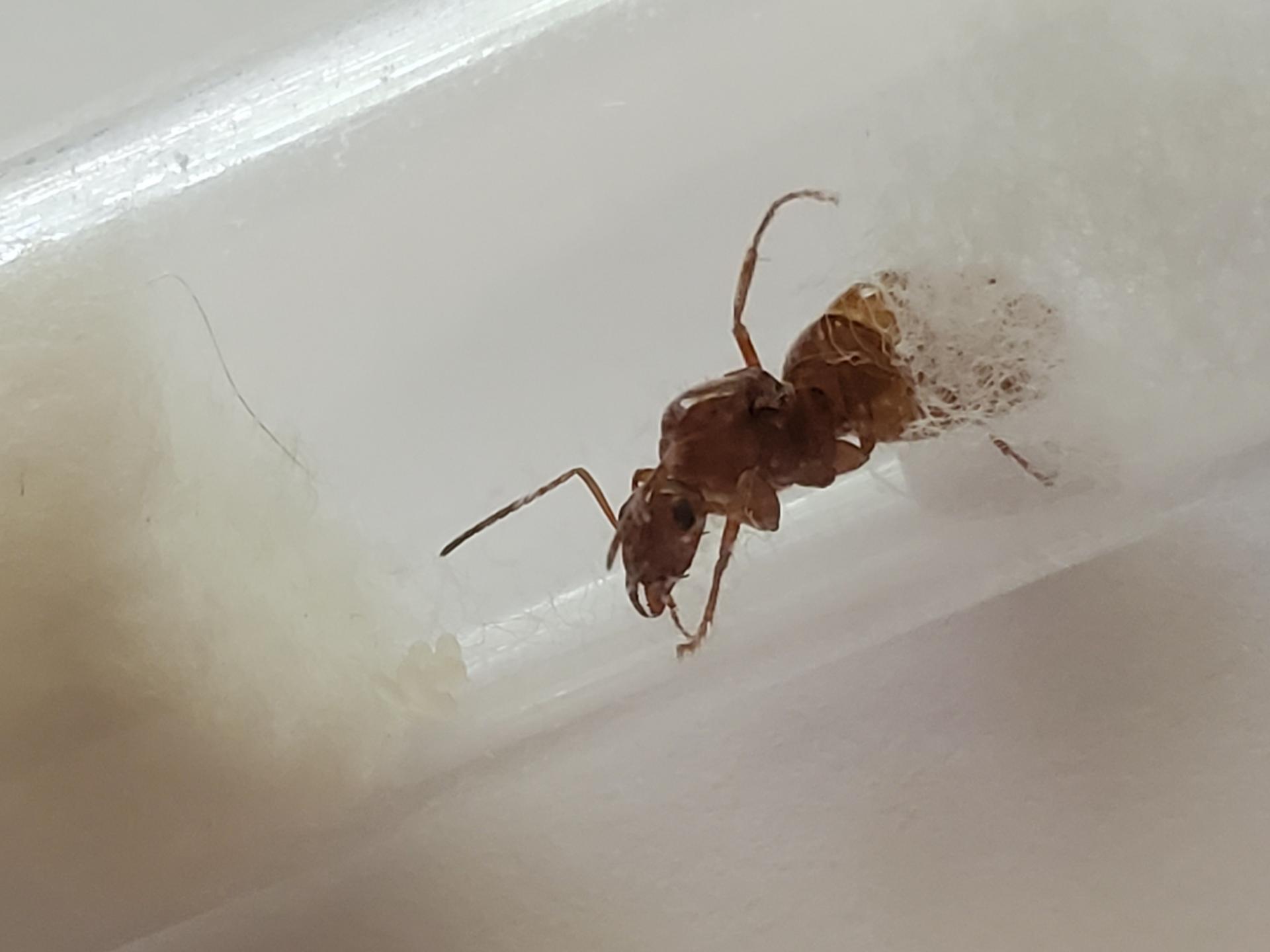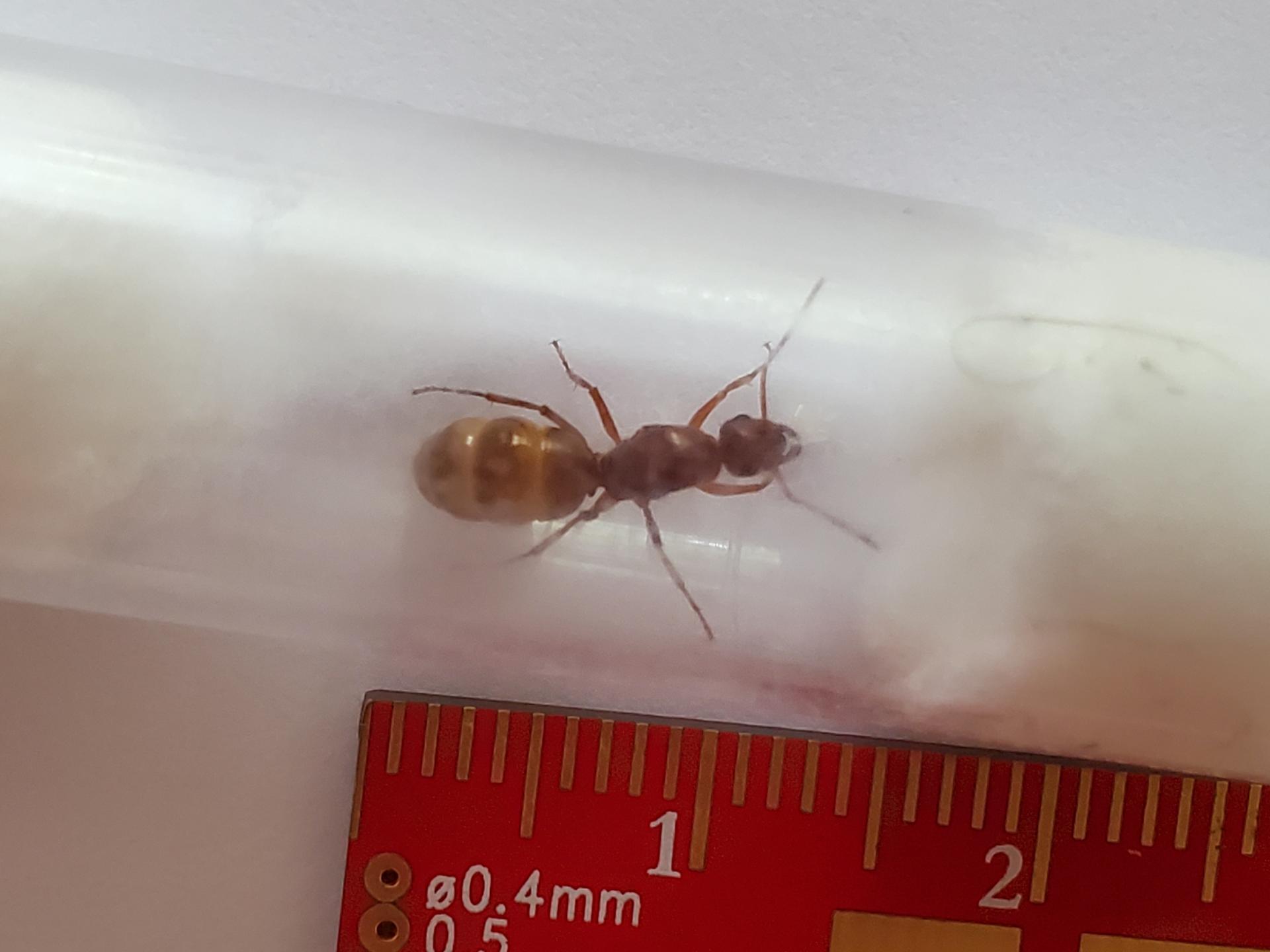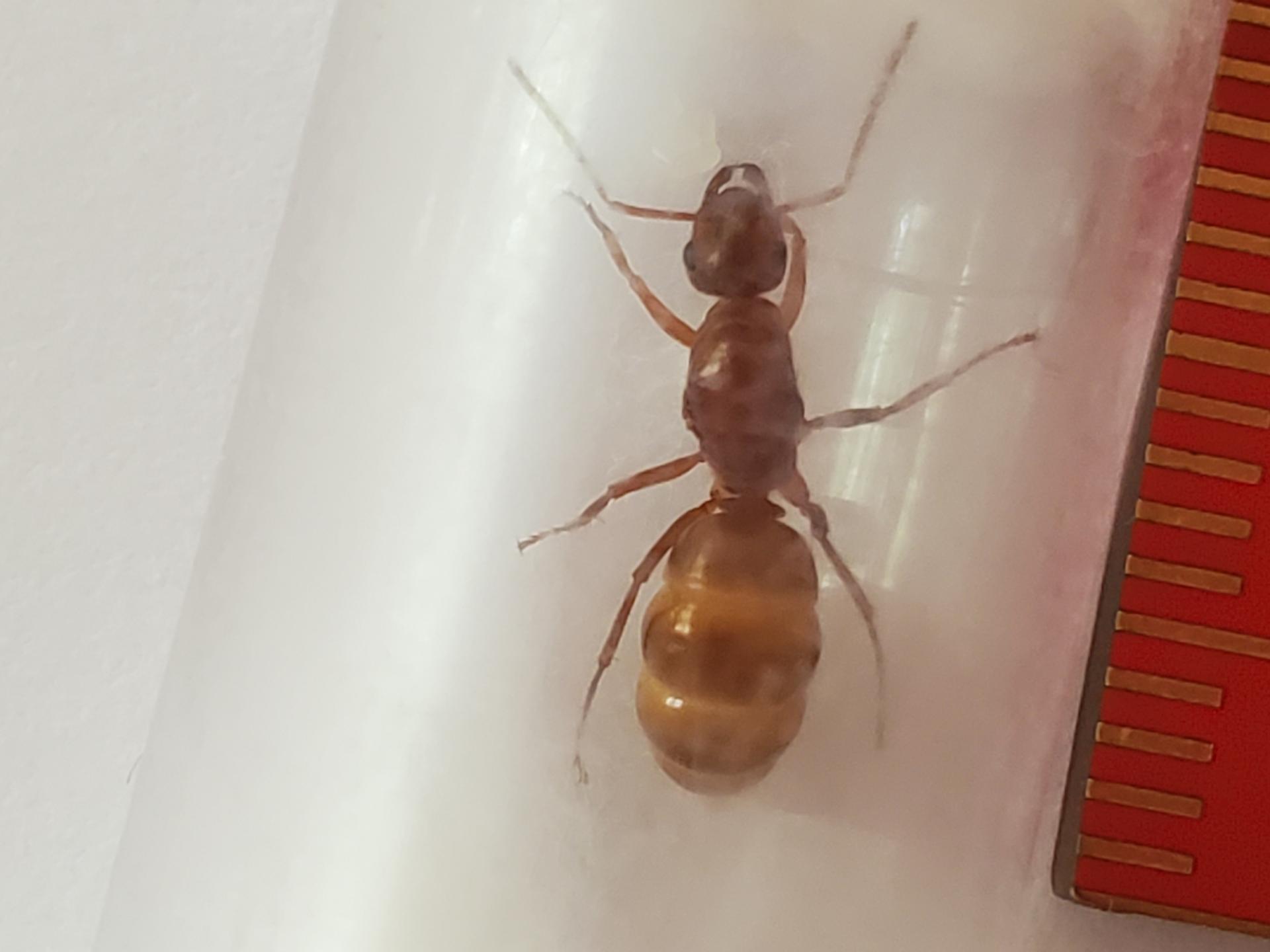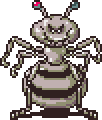Body:
1. Location of collection Neighborhood, Huntsville Alabama
2. Date of collection - 7.10.2021
3. Habitat of collection - Heavily shrubbed suburb.
4. Length - 12mm?
5. Coloration, hue, pattern and texture - smooth, red, striped gaster.
6. Distinguishing characteristics - big booty judy, also red, i'm not useful. i'm sorry ![]()
7. Anything else distinctive (ie: odor, behavior, characteristics relative to others in the colony, etc.).
9. Nuptial flight time and date - 7.10.2021





















